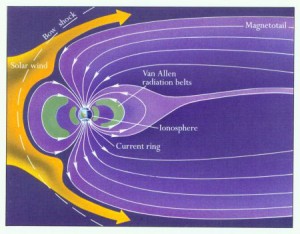by Owen K Waters
The Shift to the New Reality is real, and it has been gathering steam since the 1960s.
In the book, “The Cultural Creatives,” Paul Ray and Sherry Anderson detail a comprehensive study of more than 100,000 adults in the United States. They found that, since the 1960s, a huge 26 percent of these adults have made a comprehensive shift in their culture – their worldview, values and way of life. A 1997 survey conducted in fifteen European countries shows that the figures are highly similar in Europe. The following is a summary of the typical values of this new culture.
Cultural Creatives love nature, respect the Earth and are deeply concerned about the environment. They like to develop close relationships with each other, and to help and encourage other people to develop their abilities. They care about personal and spiritual development, and want more equality for women and all cultural groups.
Cultural Creatives would like to develop a new way of life. They are cynical of media-fed information, and want to find a new political philosophy that works in today’s reality. They are not materialistically driven, and typically have their finances and spending under control. They like traveling to other countries to get to know new cultures and they want to develop a sense of community where they live. Authenticity is important to Cultural Creatives; that their actions are consistent with their words and inner beliefs.
In the early 1960s, there were too few Cultural Creatives to measure in surveys. At that time, American culture was split evenly between two cultural groups – the Moderns and the Traditionals. Moderns reflect an ethic which actually goes back as far as the Renaissance, when European Protestantism freed the population to pursue a self-empowered work ethic rather than continue to give their power, freedom and sense of initiative away to authority figures.
The ethic of Modernism is that newer, bigger and faster are all better. Time is money, they believe, and people with more knowledge and wealth are perceived as having higher status. Almost half of American adults today are Moderns. Their self-empowered principles over the centuries have brought progress to civil freedoms, democracy, justice and equality. Moderns tend to believe that theirs is the only way and reject the values of other groups as being incorrect.
The positive contributions of Moderns can be appreciated when you consider the quality of life which existed before the Renaissance. At birth, in those days, your fate was sealed. You were born into a certain social, ethnic and racial group at a certain location. You would likely never travel more than 50 miles from your birthplace during your life. What work you could perform, and whom you would marry, were predetermined. You would be compelled to believe certain doctrines, as dictated by rulers, priests and elders.
Traditionals are the ones who historically react against the changes brought about by Moderns. They wish for a return to an older, simpler time, and they oppose modern trends such as equality for women. They believe that patriarchs should again dominate family life, that men should be proud to serve in the military, and that their moral values should be forced upon others. In post-World War II America, Traditionals formed half of the adult population. Today they number less than one-fourth of the adult population. Many have passed away, while some have converted into becoming Moderns or Cultural Creatives.
Within the Cultural Creatives are two distinct sub-groups. Almost half of the Cultural Creatives form a Core Group of more intense, leading-edge thinkers. The others are the Green Cultural Creatives, whose focus is directed externally, towards ecology and environmental issues, rather than towards inner personal development.
The trend-setting Core Group is typically into alternative health care, often as health care practitioners, and most of them want to develop more inner self-awareness. They shun the materialism of the Moderns and the intolerance of the Traditionals toward other peoples.
Cultural Creatives cross all types of demographic groupings. They can be of any adult age category, they can live anywhere, and have any spiritual or religious affiliation. Less than ten percent of them identify themselves as New Age. Interestingly, there are just as many New Agers within the ranks of the Moderns as there are within the Cultural Creatives. The ratio of women to men is fairly equal in the Greens Group, while the Core Group contains 67 percent women. Many of the New Age Moderns are men who are still chasing the boys’ toys of modern technology and haven’t yet settled down to finding a deeper meaning within themselves.
Compared to other groups, Cultural Creatives read more books and magazines. Half of them are regular book buyers. They watch less television and are particularly unhappy with the quality of television news. They support, and become involved in, the arts. They like well-made, durable products, natural food, personal growth and alternative health care. They have a holistic attitude; that body, mind and spirit should work together. Their homes may well be buffered for privacy by old-growth trees and large shrubs. Inside, these homes are typically decorated by craft pieces, books and original art pieces which have special meaning to them.
Their culture is one of silent trailblazing. Most of them have no idea that there are countless millions of people just like them with the same values and lifestyle. When they discover that 25 percent of the adult population are just like them, they are truly shocked and surprised.
Cultural Creatives, it could be said, are the silent revolution. Imagine how much more transformative their effect on society will be when they evolve into networking, voicing their values and forming representative movements.
Cultural Creatives are a newly emerging type of humanity. They hold the seeds of a new, sustainable culture, a culture where “quality of life” replaces “standard of living.”

